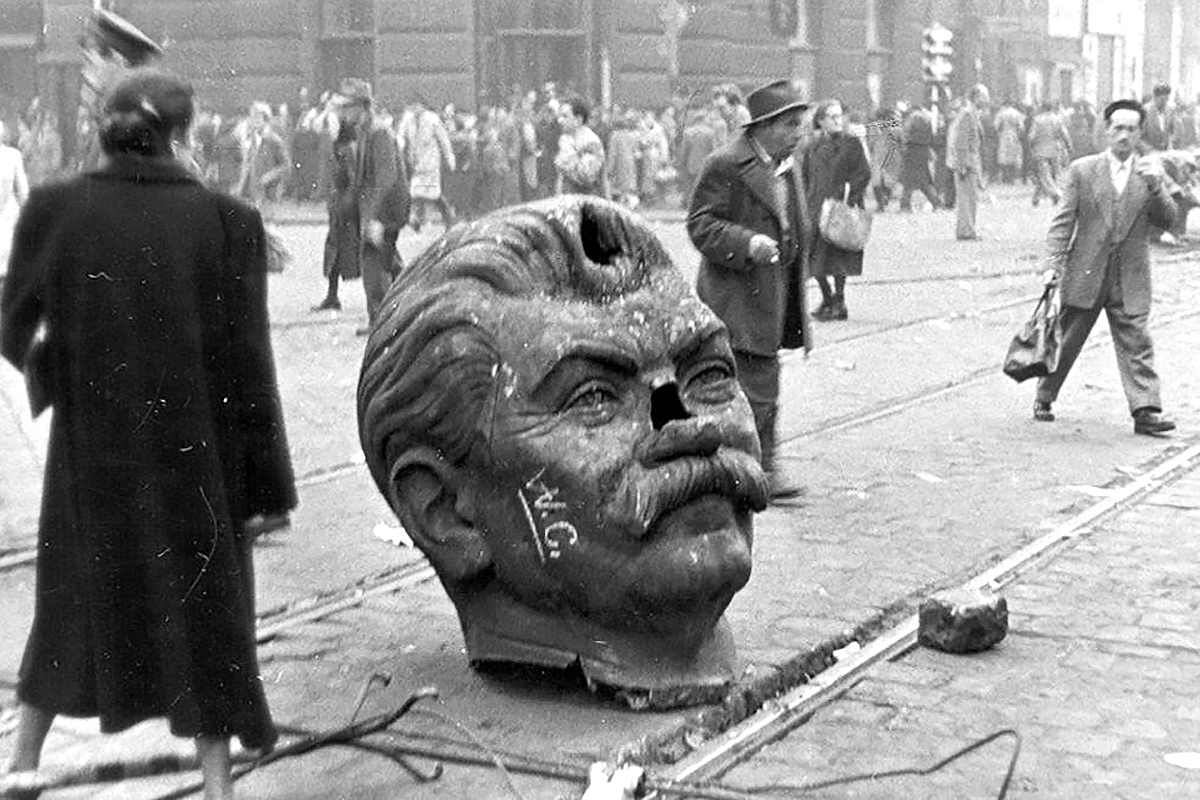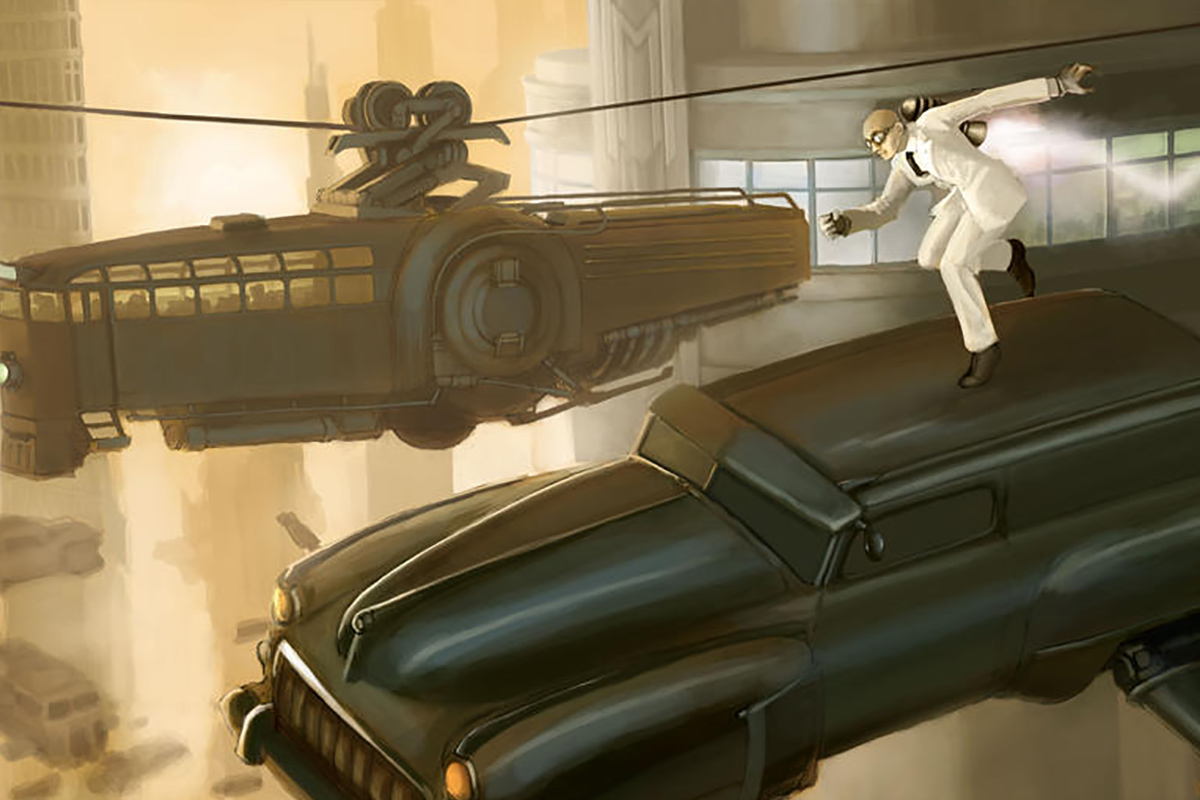Within published alternate-history fiction of decades gone by, there seemed to be only a few genres that would make use of an alternate-history setting. The most common being the thrillers like SS-GB (Len Deighton, 1978) and Fatherland (Robert Harris, 1992) as well as epic like the multi-volume Worldwar and Southern Victory series by Harry Turtledove. These were pretty well-defined by the 1990s, but before this there was a lot more experimentation with the format like we see again today.
One such experimentation was Robert Sobel’s For Want of a Nail (1973), which presented itself as a history textbook from another world and is a format that we are all the more familiar with nowadays than readers were when it was first released.
Another such fictional document narrative is The Iron Dream (1972) by Norman Spinrad — but here the document is not a history textbook, but rather a science-fantasy novel and an accompanying scholarly analysis. The metafictional science fantasy adventure within The Iron Dream is Lords of the Swatstika, by Adolf Hitler.
The central allohistorical conceit in The Iron Dream is that shortly after the Great War, Hitler makes his way to the United States where he becomes a science-fiction illustrator and eventually author, whose magnum opus, Lords of the Swastika, is published in the 1950s shortly before his death. It goes on to be one of the seminal works within the genre, becoming very popular with both readers and reviewers to the point where it becomes a focal point for a large fandom in the same way Star Trek and others would become in our own timeline in later decades.
Without Hitler, the Nazi Party collapses in the 1920s and the Communist Party of Germany manages to come to power by 1930, with a Greater Soviet Union seemingly stretching across Europe by 1950. With no Second World War equivalent, the United States is never roused from its interwar isolation and the Empire of Japan is instead the crux of an anti-Soviet bloc consisting of itself and the US as well as Australia and New Zealand.
Lords of the Swastika itself is a puerile, cliché-ridden, overdramatized load of rubbish; lacking any ideas of structure, character or suspense. Its protagonist is a Mary Sue who starts out the story on the top of the world and soon obtains a ladder. Feric Jaggar returns from exile in Borgravia to his ancestral homelands in Heldon proud of the lack of mutations in his DNA centuries after a nuclear holocaust and keen to return Heldon to is former glory by destroying those he sees as impure.
Remind you of anybody?
In his disgust at the infiltration of the mutant Dominators and Universalists in the pay of Dominator country Zind, he soon acquires followers in the shape of a sharp propaganda righthand man and a group of thuggish paramilitaries.
Remind you of anybody?
Rising to power in Heldon, Jaggar soon sets about reforming the country and embarking on a crusade of genetic purity, euthanizing those deemed impure, invading their neighbors and having old associates murdered.
Remind you of anybody?
Soon Heldon has its final confrontation with Zind, where thanks to his deft brilliance and determination to prevent further destruction through use of the ancient nuclear weapons, Jaggar emerges victorious.
Alright, so fortunately for us how Hitler handled himself in reality and how his author insert handle themselves are very different.
When reading Lords of the Swastika within The Iron Dream, there is an element of masochism to it. You know you are reading is a conceit of Hitler’s wish-fulfillment narrative that comes with its own ill feeling. Every now and then, though, you get a flash that you have read something similar to this before, and if you are a fan of the science-fiction or fantasy genres then you probably have. The Iron Dream was largely Spinrad’s response to the theories of heroic archetypes found in Joseph Campbell’s The Hero with a Thousand Faces.
Every now and then reading the story within a story in The Iron Dream, you are made very aware of the comparisons to be drawn between the ideology of the Nazi Party and the archetypes of fantasy and science fiction. I do not know when Spinrad first encountered Campbell’s theories, but the year of its publication coincided with the very last of the subsequent Nuremberg trials. At the time, with the aftermath of the Second World War and the Holocaust still part of everyday news, perhaps it is no small wonder that Spinrad saw comparisons between the comparative mythology of Campbell and what had taken place in Nazi Germany earlier in the decade.
There is still some humor to be found in the lurid prose of Lords of the Swastika, the unambiguous phallic imagery throughout the work is at the forefront so much that you cannot help but laugh at the image of the Ernst Röhm analogue kneeling and kissing the large black truncheon held by Jaggar as a sign of fealty. This also comes across in the fictional literary analysis that makes up the rest of the book, with fictional critic Homer Whipple criticizing that an entire nation would give up its freedom and embark on a crusade of domination all because of some late-night mass rallies and phallic symbolism. From an alternate-history analysis of Lords of the Swastika, with all the myriad of Nazi victory timelines and works we have seen, one that ends with the Soviet Union launching a nuclear apocalypse on Nazi Germany would actually be an unexpected, if highly unlikely, ending.
The frame narrative of The Iron Dream keeps the alternate history in broad enough strokes that you get a real sense of the state of the world, but not so much as to clog the narrative with numerous “As you know” type statements that would only lead the flaws being spotted in the alternate world.
At the time in science-fiction circles, The Iron Dream won critical acclaim, including a Nebula Award. Elsewhere there were those who were not in on the joke that really misinterpreted the intent of the novel; it was indexed by the Federal Review Board for Media Harmful to Minors in West Germany by 1982, and the ban would not be lifted until 1990 after a court challenge by the publisher. It was also included on a list of recommended reading by the American Nazi Party.
To Spinrad’s credit, he made sure to include the literary analysis sections of the book to make sure no one could misinterpret his intent, but still found it banned in Germany and recommended by the American Nazi Party.
In as much as there is an ironic enjoyment to be found in Lords of the Swastika through spotting just how many senior Nazis show up in a post-apocalyptic science fantasy context, its significance comes from how it takes an introspective look at much of science fiction and fantasy and the underlying power fantasies, often militaristic in nature, that recur within. Even to the point of bludgeoning his readers with irony, Spinrad found himself struck by one review he read in a fanzine — “This is a rousing adventure story and I really enjoyed it,” the gist of it went. “Why did Spinrad have to spoil the fun with all this muck about Hitler?”
This story was originally published by Sea Lion Press, the world’s first publishing house dedicated to alternate history.





